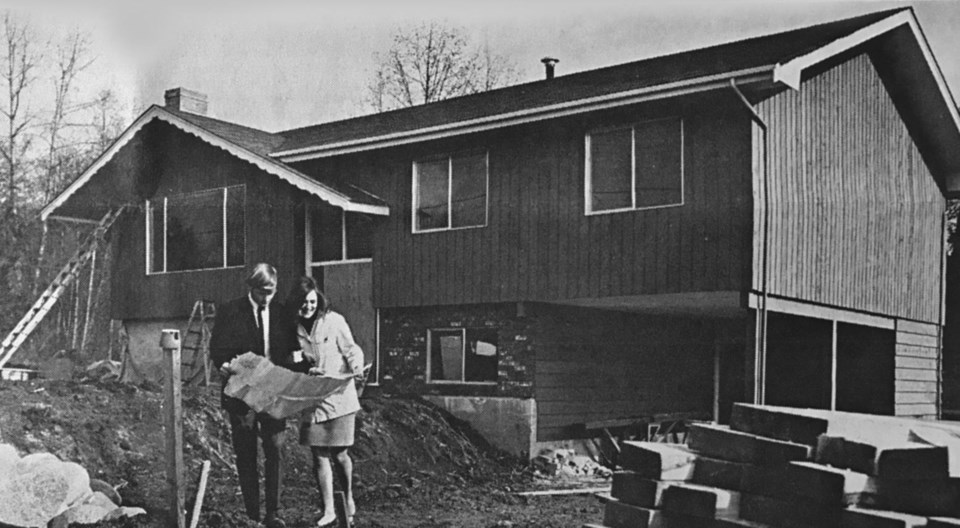The opening of the new Deas Island Tunnel in 1959 opened the door for massive residential growth in Delta, but it was mostly the type of housing that's now out of reach for many who want to live here.
When the tunnel opened, Reeve John Kirkland predicted it would bring problems to Delta, but the municipality would meet and solve them.
In the summer of 1956, three years before the tunnel opened, council got a warning from the Lower Mainland Regional Planning Board how the growth associated with the new crossing wouldn't necessarily be seen as progress.
Warning of sprawl, James W. Wilson, executive director of the board, said one of the dangers was “overdone residential growth which does not bring economic benefit.”
Council also got warnings about negative impacts during the crossing’s construction.
Lloyd Gray and David Sharp, representing the consulting firm of Joseph B. Ward and Associates, said it could be difficult to maintain Delta as an agricultural centre, as was the case in Richmond.
In 1958, council again got warnings about sprawl associated with growth that would result from the tunnel. That year, the regional planning board submitted to council a study of Delta which recommended stringent zoning measures to stop “further spread of sprawl” already seen in other areas.
“The first impact of things to come is already being felt and tomorrow will bring changes more profound. A new tunnel and highway will put Delta within a half-hour's drive of Vancouver,” the report stated.
The recommendations included the building up of existing sprawl areas to more compact urban densities. The report also suggested that stringent policies be adopted and maintained for farming areas, so that the minimum lot size is large enough to “prevent any random or speculative subdivision for house-building purposes.”
The planning board also took the position that the policies shouldn't be seen as permanent, but rather something that should be reviewed with regularity.
“Urban growth is like a great river; controlled, diked, dammed and it can bring prosperity; allowed to run wild it is disastrous. This does not mean that urbanization is necessarily a bad thing, but it does mean that any municipality in the position of Delta today needs to take a long hard look at the future and to prepare for what it sees there," the report suggested.
Delta council, however, would grapple with a flood of development applications and differing ideas on what should be allowed.
In the early '60s, council fired planner Bob Williams, who was reportedly a disciple of the “stop sprawl” school.
Angered at the decision, council member Carl Liden, who years later would be an NDP MLA for Delta, accused developers of wanting Williams axed for some time.
Growth was so rapid in those days that when a 1,000-home Ladner subdivision was proposed in the spring of 1969, Mayor Dugald Morrison said Delta was “overwhelmed” with new housing and needed to digest what it already had.
Almost all that housing built during the boom years for incoming families were singe-detached units, as rental apartments and condos were too controversial. Developers also complained about the time it took getting anything considered high-density approved.
In 1964, council endorsed a consultant's report recommending North and South Delta be promoted primarily as single-family residential communities.
The South Delta Taxpayers’ Society in the mid-1960s complained how the current zoning bylaw was inadequate, and had the city properly dealt with it a year earlier “present instances of hardship of one-family residences having duplexes next to them could not have happened.”
The society stated “single-family residents should be given protection from encroachment from rental apartment facilities and duplexes” and that Delta should steer clear of over intensifying “population density in areas specifically chosen by the buyer for space and quiet.”
The society also warned that “rental housing, unless meticulously maintained by a conscientious landlord, reflects badly on surrounding property values.”
Delta's Housing Needs Assessment a few years ago, which helped guide a new Housing Action Plan, notes home values in the city increased exponentially, but household income didn’t keep pace, making the choice to move into the ownership housing market in Delta even more difficult.
Noting the high proportion of single-detached housing is not meeting the needs of the community, the report also states it is critical that the community has a variety of different housing types to be able to support residents at every point in their lives.
The city in the last couple of years has been introducing new policies to alleviate Delta's housing challenges.
The province has also stepped in with new legislation which cities will be required to follow.




